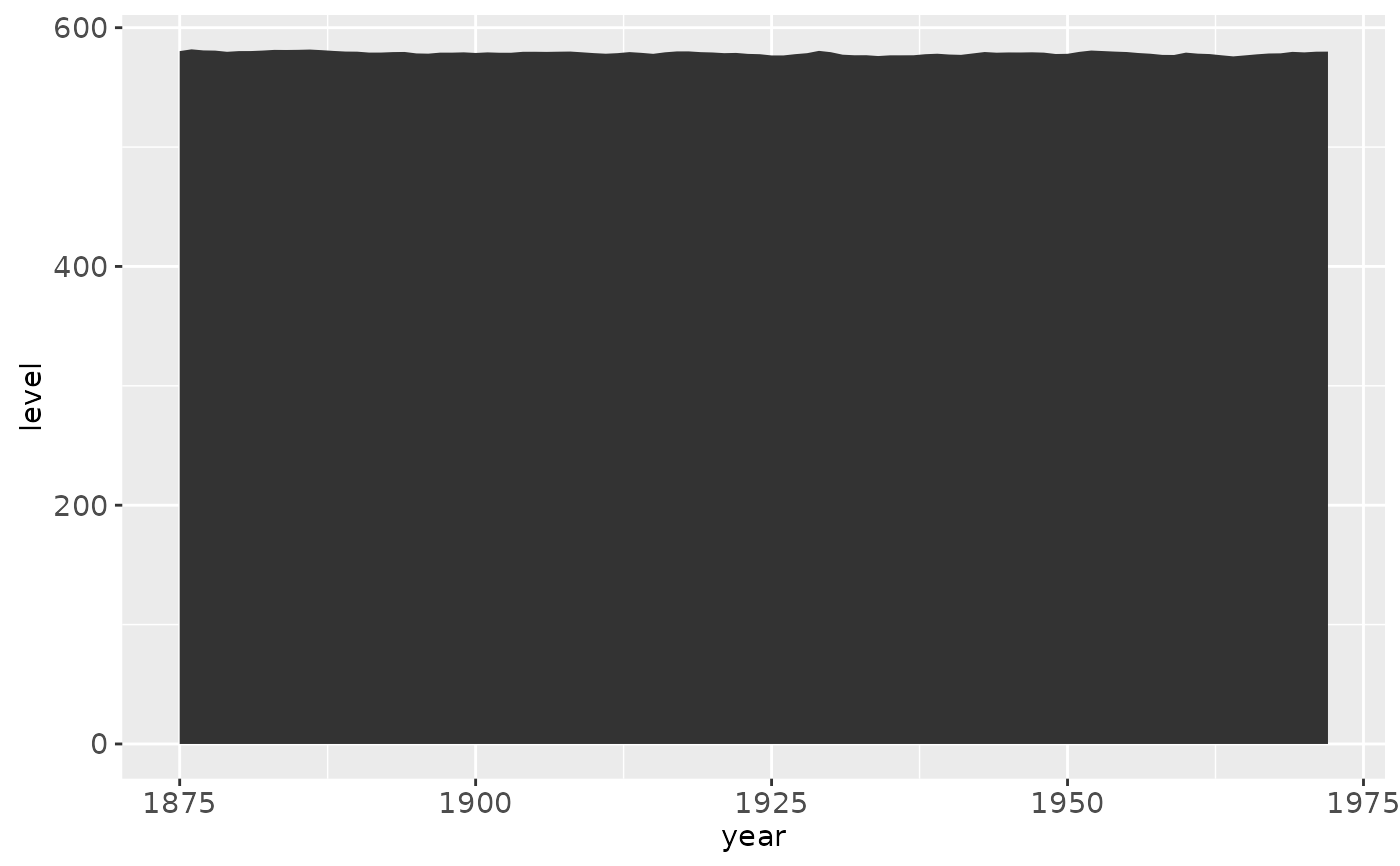For each continuous x value, geom_interval displays a y interval.
geom_area is a special case of geom_ribbon, where the
minimum of the range is fixed to 0.
Usage
geom_ribbon(
mapping = NULL,
data = NULL,
stat = "identity",
position = "identity",
...,
na.rm = FALSE,
show.legend = NA,
inherit.aes = TRUE
)
geom_area(
mapping = NULL,
data = NULL,
stat = "identity",
position = "stack",
na.rm = FALSE,
show.legend = NA,
inherit.aes = TRUE,
...
)Arguments
- mapping
Set of aesthetic mappings created by
aesoraes_. If specified andinherit.aes = TRUE(the default), it is combined with the default mapping at the top level of the plot. You must supplymappingif there is no plot mapping.- data
The data to be displayed in this layer. There are three options:
If
NULL, the default, the data is inherited from the plot data as specified in the call toggplot.A
data.frame, or other object, will override the plot data. All objects will be fortified to produce a data frame. Seefortifyfor which variables will be created.A
functionwill be called with a single argument, the plot data. The return value must be adata.frame., and will be used as the layer data.- stat
The statistical transformation to use on the data for this layer, as a string.
- position
Position adjustment, either as a string, or the result of a call to a position adjustment function.
- ...
other arguments passed on to
layer. These are often aesthetics, used to set an aesthetic to a fixed value, likecolor = "red"orsize = 3. They may also be parameters to the paired geom/stat.- na.rm
If
FALSE(the default), removes missing values with a warning. IfTRUEsilently removes missing values.- show.legend
logical. Should this layer be included in the legends?
NA, the default, includes if any aesthetics are mapped.FALSEnever includes, andTRUEalways includes.- inherit.aes
If
FALSE, overrides the default aesthetics, rather than combining with them. This is most useful for helper functions that define both data and aesthetics and shouldn't inherit behaviour from the default plot specification, e.g.borders.
Details
An area plot is the continuous analog of a stacked bar chart (see
geom_bar), and can be used to show how composition of the
whole varies over the range of x. Choosing the order in which different
components is stacked is very important, as it becomes increasing hard to
see the individual pattern as you move up the stack.
Aesthetics
geom_ribbon understands the following aesthetics (required aesthetics are in bold):
x
ymax
ymin
alpha
colour
fill
linetype
size
See also
geom_bar for discrete intervals (bars),
geom_linerange for discrete intervals (lines),
geom_polygon for general polygons
Examples
# Generate data
huron <- data.frame(year = 1875:1972, level = as.vector(LakeHuron))
h <- ggplot(huron, aes(year))
h + geom_ribbon(aes(ymin=0, ymax=level))
 h + geom_area(aes(y = level))
h + geom_area(aes(y = level))
 # Add aesthetic mappings
h +
geom_ribbon(aes(ymin = level - 1, ymax = level + 1), fill = "grey70") +
geom_line(aes(y = level))
# Add aesthetic mappings
h +
geom_ribbon(aes(ymin = level - 1, ymax = level + 1), fill = "grey70") +
geom_line(aes(y = level))
